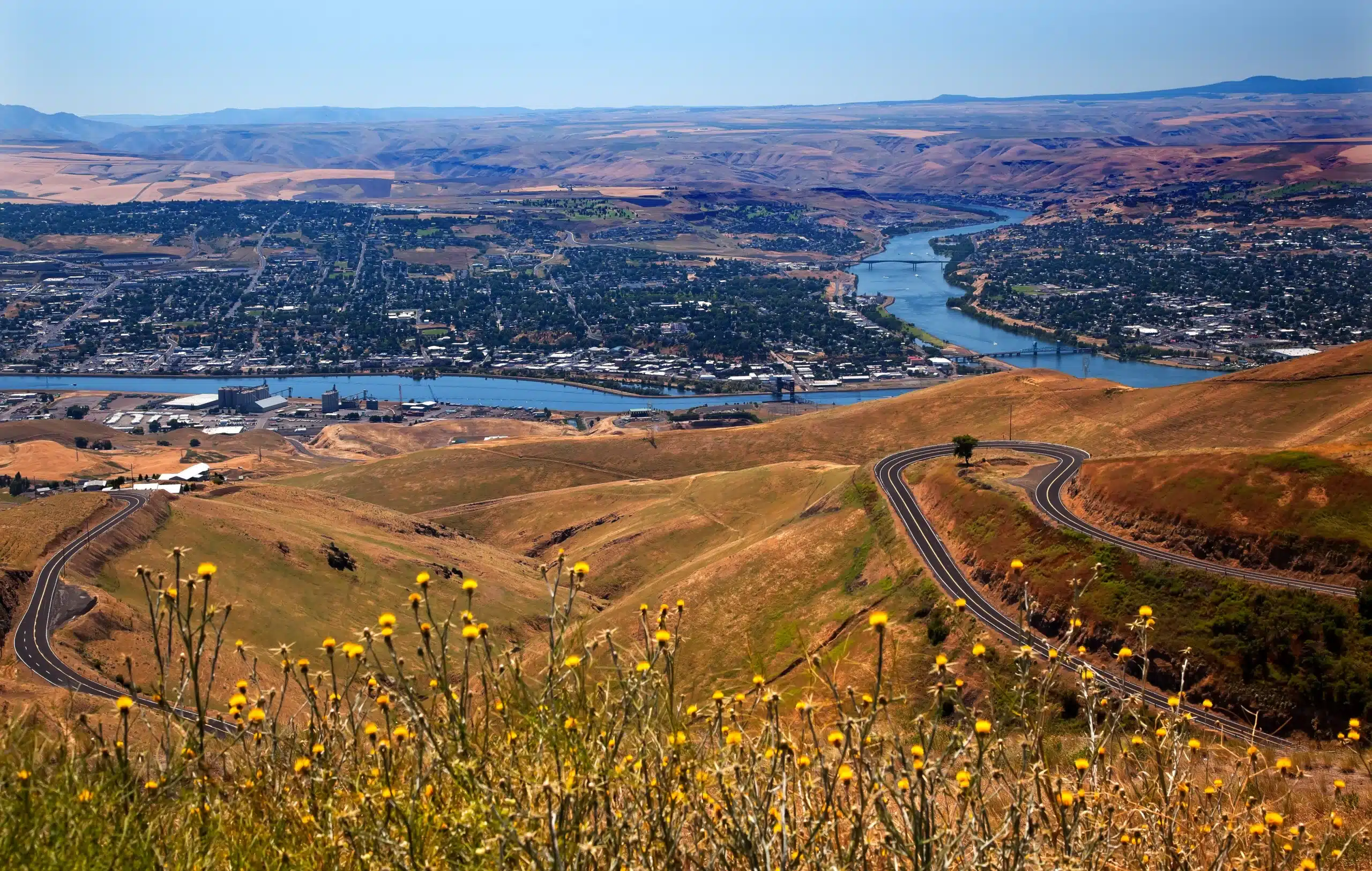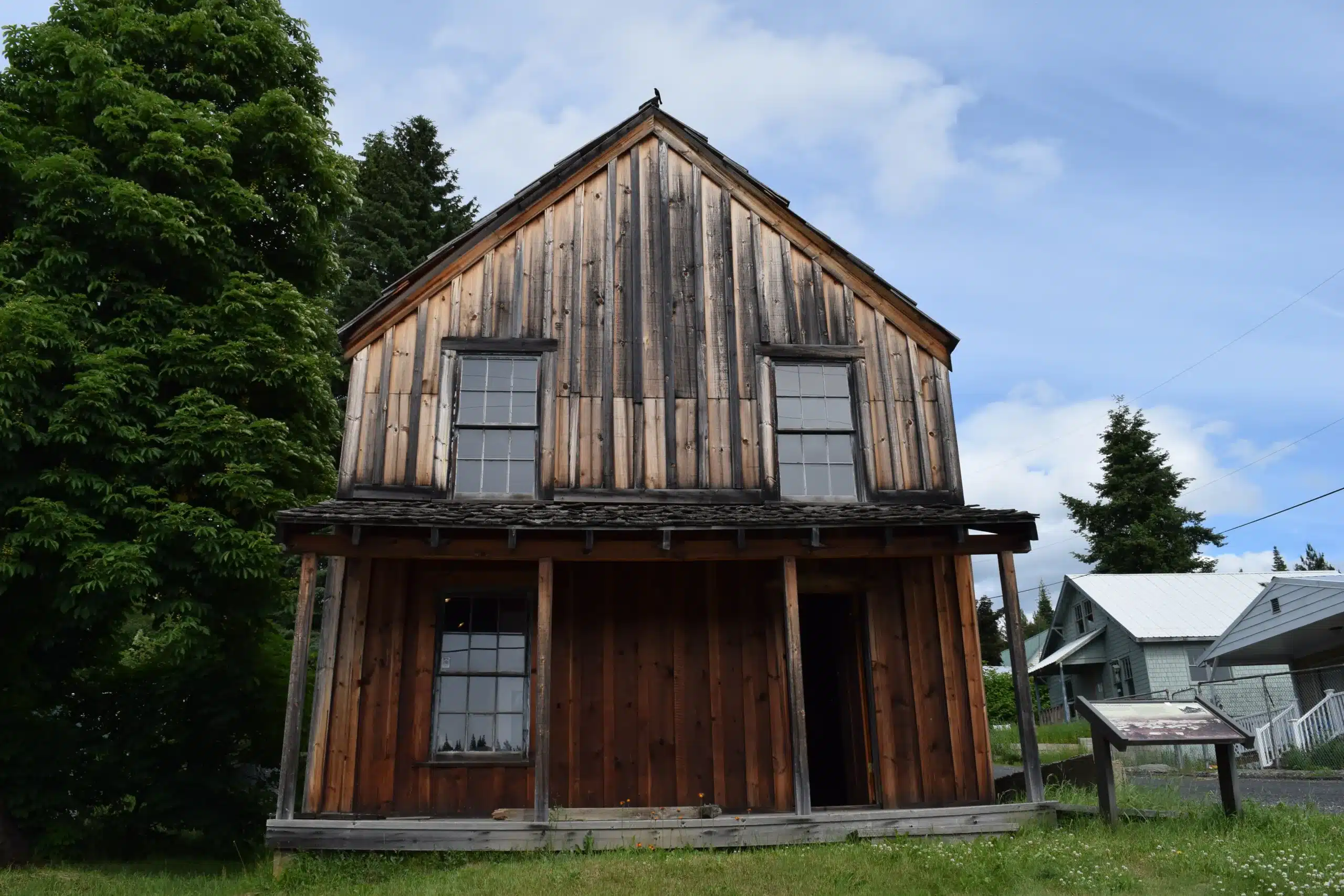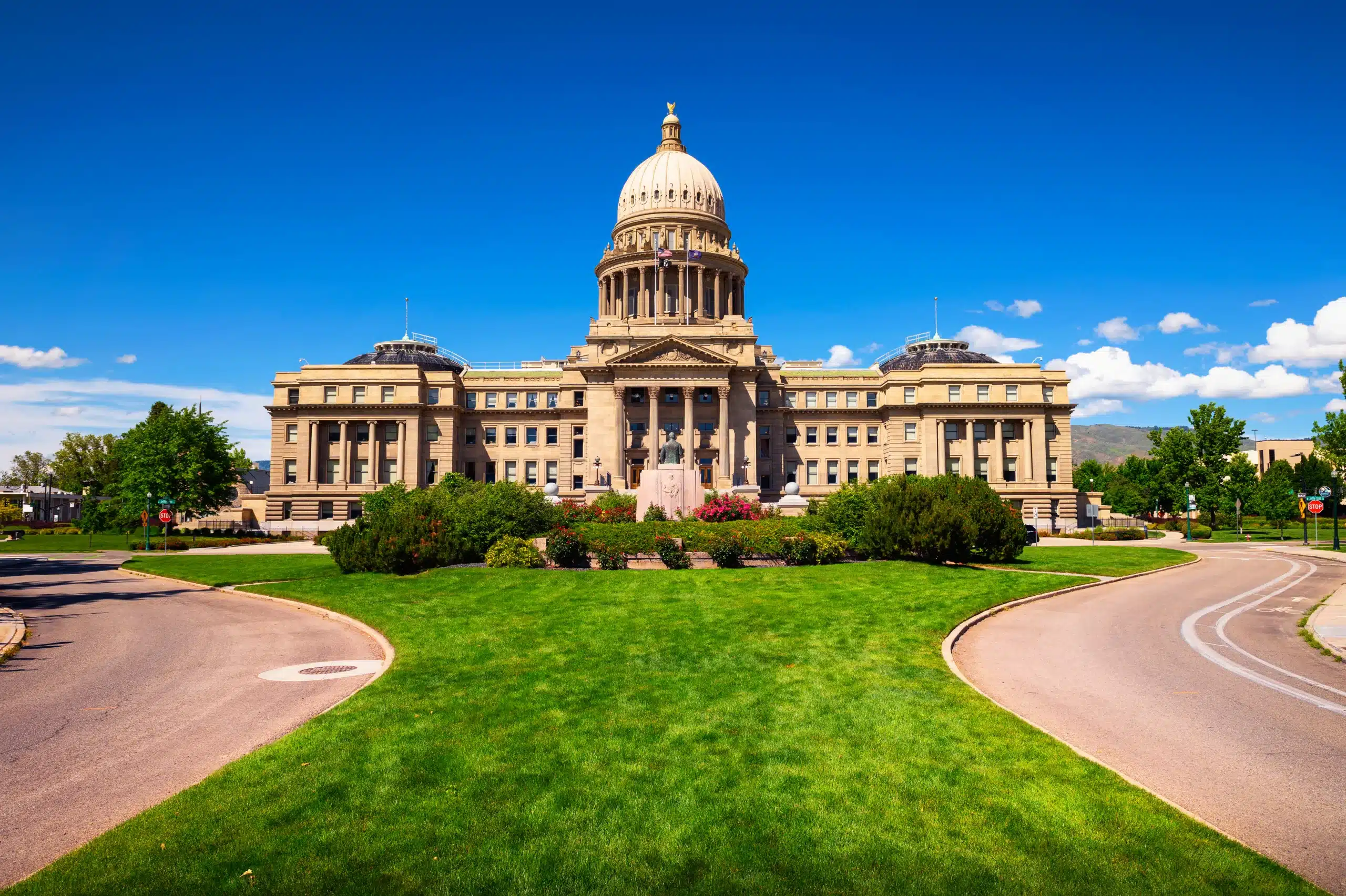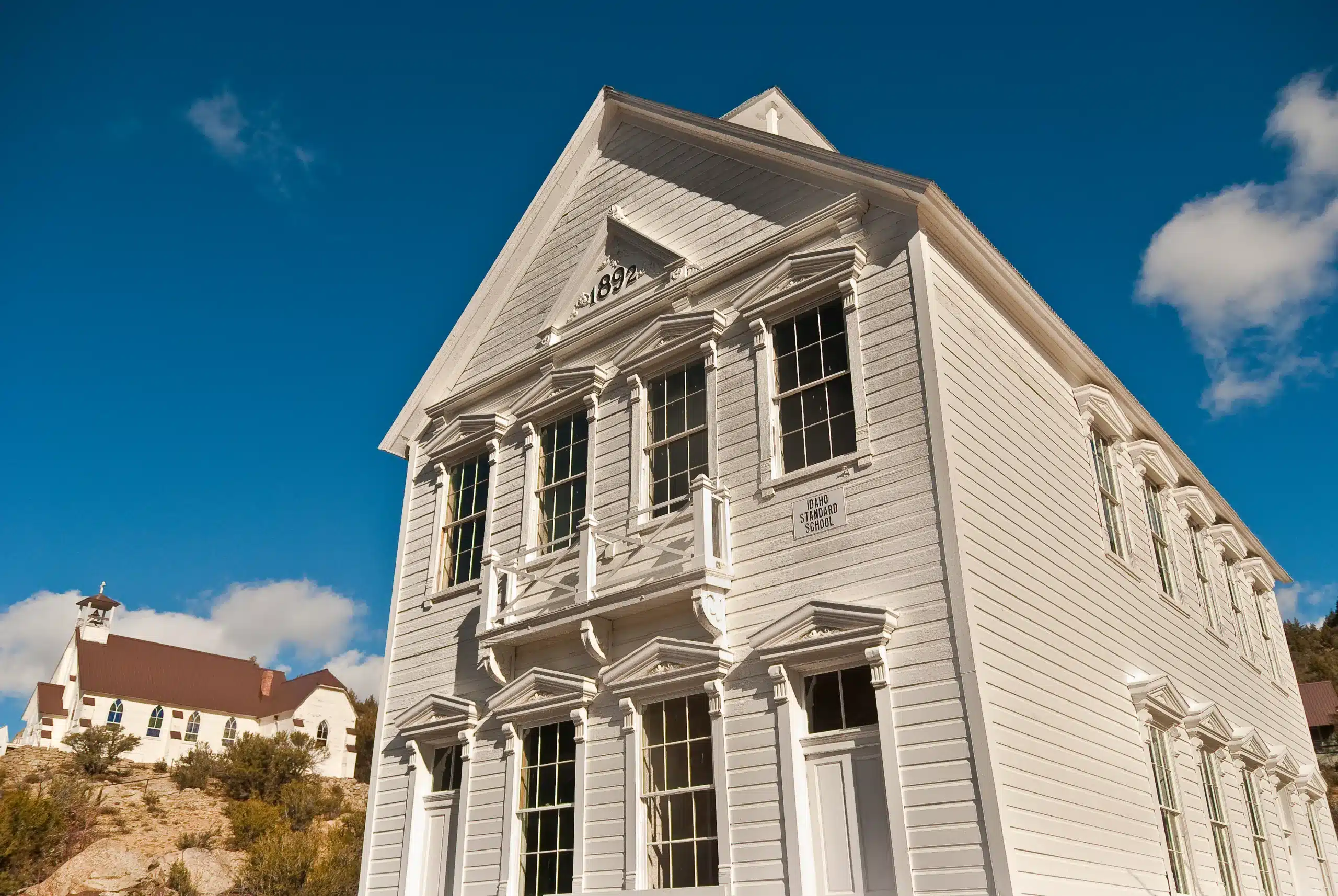Granted statehood in 1890, Idaho is the 43rd state in the United States. Despite only being part of the United States for a little over a century now, Idaho has a rich and complicated history that extends well before its statehood. From its gold rush in 1860 to its separation from Washington Territory in 1863, many historical events have occurred in the state’s relatively brief time.
From the state’s capital to towns with a population of less than 500 people, Idaho is chock full of historic places. Below are 10 of the oldest towns and cities in Idaho, when they were established, what they are known for, and more.
Franklin, Idaho
Established: 1860
Founded by Mormon pioneers, Franklin was technically established when modern day Idaho was still considered part of Washington Territory. The town was named after a Mormon Apostle, Franklin Richards. Franklin was the first permanent European settlement in Idaho. The land was disputed by Idaho and Utah Territory until 1872 when it was dedicated the town limits were located just a little over 1.5 miles north of Utah Territory.
Today, Franklin is famous for its part in the movie Napoleon Dynamite. The chicken farm scenes in the film were shot at Ritewood Egg Farms and the character of the supervisor was based loosely on a late Franklin resident and founder of the farm. Much like the depictions in the film, Franklin is a small town with a population of less than 650.
Lewiston, Idaho

Established: 1861
Known as the third largest city in Northern Idaho and 12th largest in the entire state, Lewiston was originally inhabited by the Nimiipuu for thousands of years before the first people of European ancestry came during an expedition in 1803. Pioneers sought to establish fur trading posts in the area but failed to successfully establish a settlement. The Lewis and Clark Expedition also visited the area in 1805 and 1806 but did not establish a settlement.
It wasn’t until a few decades later that a town was finally established, supposedly named after Meriwether Lewis or the city of Lewiston, Maine, although the reason behind this is disputed. The gold rush in Idaho is what brought prosperity to Lewiston. However, the city wasn’t without struggles, including the Nez Perce War in 1877 and the recent flooding due to the failure of the city’s reservoir.
Pierce, Idaho

Established: 1861
Much like Lewiston, Pierce was established after the discovery of gold in the area in 1860. The town struggled quite soon after its establishment due to the gold discovery being on land ceded to the Nez Perce people. This caused Pierce to also suffer through the Nez Perce War in 1877.
Along with its complicated history with the Nez Perce people, Pierce is known for having Idaho’s oldest public building. The Pierce Courthouse was constructed in 1862, just one year after the town was established, and was added to the National Register of Historic Places in 1972.
Idaho City, Idaho
Established: 1862
Originally known as Bannock or West Bannock, Idaho City was yet another city established due to a gold rush, specifically the Boise Basin gold rush during the Civil War. This gold rush was the largest of its kind since the California gold rush that occurred 12 years before. When the town’s population grew, its name was changed to Idaho City to avoid confusion with another city named Bannack in Montana.
The city peaked in the mid-1860’s with over 200 businesses, 36 saloons, and 24 law offices. Its population soared to 7,000 in 1864 making it the largest city in the northwest. This success would be short-lived due to multiple fires that caused the city to burn in 1865, 1867, 1868, and 1871. Today, the city is known for establishing the first Catholic parish in Idaho Territory and as an important location in Masonic history.
Montpelier, Idaho
Established: 1863
Not to be confused with the city of the same name in Vermont, Montpelier was settled by Mormon pioneers on the Oregon Trail. It was originally named Clover Creek but was later renamed to Belmont before finally being named Montpelier after the city of the same name in Vermont. The name was chosen by Mormon pioneer Brigham Young who was born in Vermont.
Today, Montpelier is known as one of the towns that was subject to a bank heist by Butch Cassidy. Evidently he was trying to get money to bail out a fellow gang member. This event has been commemorated by a plaque. The historic district of the town was listed on the National Register of Historic Places, including a city hall, a high school, and a Mormon church.
Boise, Idaho

Established: 1863
Known as the biggest and most populated city in Idaho, it is only fitting that Boise is also the state’s capital. Located on the Boise River, the city is framed by the beautiful Boise Mountains that tower over the downtown area. The name of the city itself has unknown origins but most believe it comes from the French phrase “Les bois” which translates to “The woods”.
Before settlers arrived, the area was inhabited by the Shoshone and Bannock tribes. The first settlers were fur traders who arrived in 1811 to establish a trading outpost. It wasn’t until the 1840’s that development actually began in the Boise area. Boise was officially established in 1863 after the discovery of gold in the Boise Valley.
Malad City, Idaho
Established: 1864
Commonly known simply as Malad, Malad City was named after the Malad River. It is also located near the Malad Valley only 13 miles from the Utah border. The city is known as one of the oldest communities in the state, initially discovered by a party of trappers in the late 1810’s. The name Malad means “sickly” in French and was given to the area due to many of the first trappers falling ill while camped there. Although they believed the illness was caused by the Malad River, it was in fact due to food poisoning, likely from eating beavers that had ingested poisonous water hemlock roots.
Beyond the visiting trappers, the area was also frequented by Mormon settlers and was initially established as Fort Stuart. A year later, the name was changed to Malad City and the town was officially established. The town went on to become an important commercial center, serving as an in between point for Salt Lake and Butte, Montana.
Silver City, Idaho

Established: 1864
Although it is technically a ghost town, Silver City is actually still open as a tourist destination and is listed on the National Register of Historic Places. The town underwent a restoration process and was reopened for visitors in 1972. Lodging and meals are available to service any tourists with historic interests who are exploring what used to be a bustling gold and silver mining town.
The city was founded immediately after the discovery of silver at the nearby War Eagle Mountain. The city also had placer and quartz vein mines but these were depleted around 1890. At that point, the city began a slow decline with small-scale mining continuing up until World War II. The last permanent resident of the city passed in 1968 and since then the city has become mostly privately owned buildings and businesses, many of which are run by direct descendants of the original miners.
Salmon, Idaho
Established: 1866
Famous for its part in the Lewis and Clark Expedition, Salmon is touted as the birthplace of Sacajawea. The city’s Interpretive, Cultural, and Educational Center was named after her. Although the origins of the town’s name are unclear, it was likely named after the nearby Salmon River which Lewis and Clark followed to reach where the city is located today.
Beyond its part in the Lewis and Clark Expedition, the town was at one point the western terminus of the Gilmore and Pittsburgh Railroad. Salmon served as the railroad’s terminus from 1910 to 1939. Today, that railroad is defunct. In the modern day, Salmon is beloved for its outdoor recreation, particularly whitewater rafting on the nearby Salmon River.
Weiser, Idaho
Established: 1871
Named after the Wieser River, the city of Weiser sits at the confluence of the Weiser and Snake River along the border of Oregon. Weiser is primarily a farming area known for its orchards and livestock endeavors. The city was named after the nearby Weiser River, although the origin of the name Weiser is still disputed.
The town itself was settled by William Logan and his wife Nancy. They built a roadhouse that was originally meant to serve workers of Olds Ferry on the Snake River. The town was originally established as Weiser Ranch in 1866 but was renamed to just Weiser in 1871. In the 1890’s, the city became well known as a major regional market and transportation center and has continued to be a business hub to this day.


